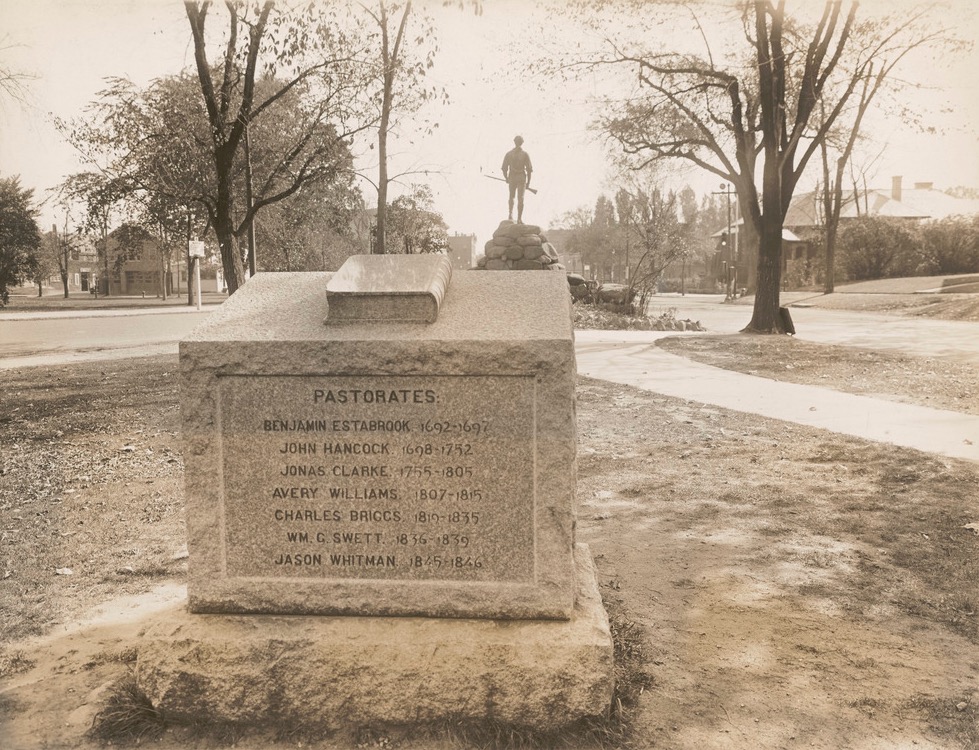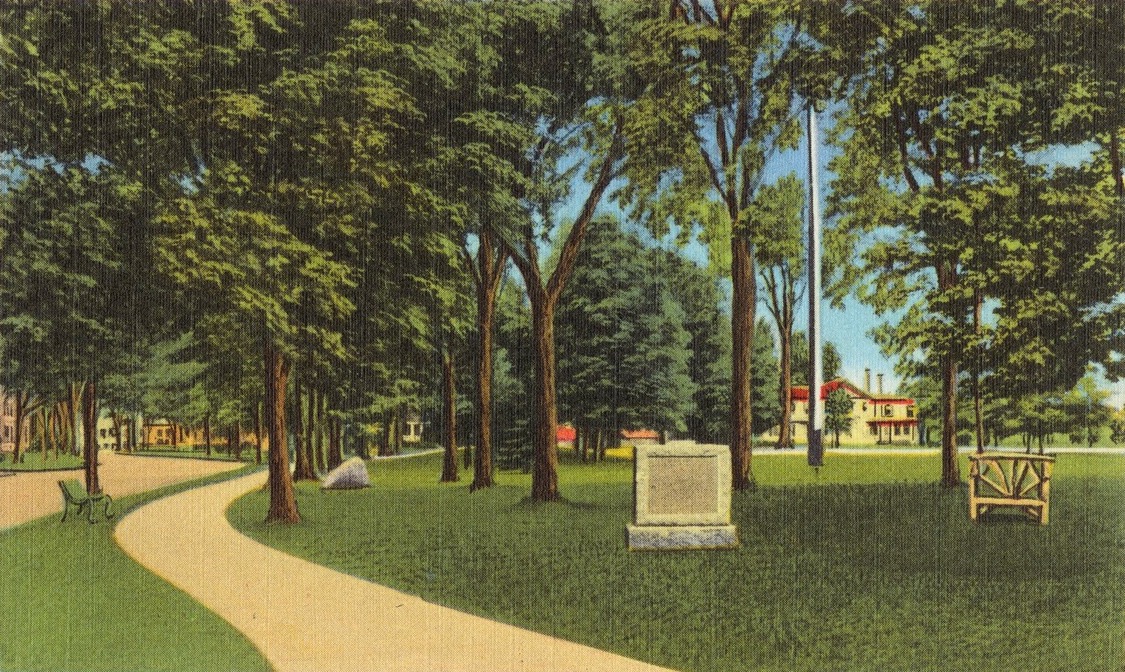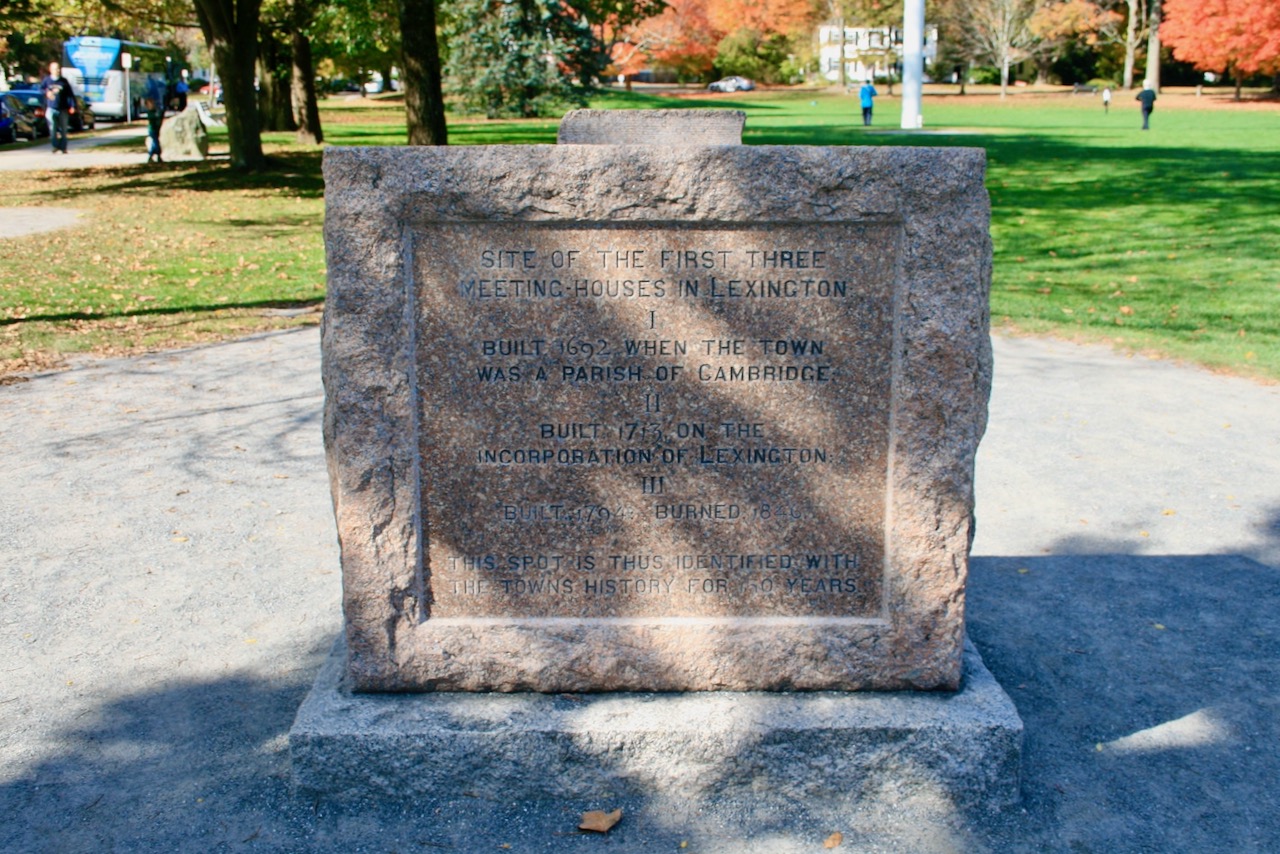
Abdalian, Leon H. “Pastorates.” Photograph. [1920?]. Digital Commonwealth.

“Lexington Battle Ground, now Lexington Green, Lexington, Mass.” Card. Tichnor Bros. Inc., Boston, Mass., [ca. 1930–1945]. Digital Commonwealth.

PASTORATES:
BENJAMIN ESTABROOK, 1692-1697
JOHN HANCOCK, 1698-1752
JONAS CLARKE, 1755-1805
AVERY WILLIAMS, 1807-1815
CHARLES BRIGGS, 1819-1835
WM. G. SWETT, 1836-1839
JASON WHITMAN, 1845-1846
The Meetinghouses Marker on the Battle Green marks the approximate location of Lexington’s first three meetinghouses, the earliest of which was built in 1692.
As recorded in the 1884 Report of the Lexington Committee on Monuments and Tablets, it was unanimously determined that the first spot to be marked should be the site of the meeting house of 1775 originally located at the south end of the common. Described as the most prominent object on the battlefield, it was also the center of civil and religious life where town meetings were held and, “the decisive action was taken which led to forcible resistance to the aggressions of the Mother Country.” It was within the walls of the meetinghouse that the town’s powder was stored and the dead were brought following the Battle of Lexington n April 19, 1775.
The Meetinghouses Marker is shaped in the form of a reading desk with a closed book upon it, indicating the site’s civic and religious history. Its south-facing orientation mimics the pulpits of the meeting houses it commemorates. The Meetinghouses Marker was the most expensive of all the monuments erected by the Lexington Committee on Monuments and Tablets.
Built from a single block of red Jonesboro granite resting on a base of Fox Island granite, its sunken polished panel’s inscription reads:
SITE OF THE FIRST THREE
MEETING-HOUSES IN LEXINGTON
I
BUILT, 1692, WHEN THE TOWN
WAS A PARISH OF CAMBRIDGE:
II
BUILT, 1713, ON THE
INCORPORATION OF LEXINGTON:
III
BUILT, 1794: BURNED, 1846.
THIS SPOT IS THUS IDENTIFIED WITH
THE TOWN’S HISTORY FOR 150 YEARS.
The opposite face of the marker includes the names and pastorate dates of seven of the town’s religious leaders:
PASTORATES:
BENJAMIN ESTABROOK, 1692-1697
JOHN HANCOCK, 1698-1752
JONAS CLARKE, 1755-1805
AVERY WILLIAMS, 1807-1815
CHARLES BRIGGS, 1819-1835
WM. G. SWETT, 1836-1839
JASON WHITMAN, 1845-1846

